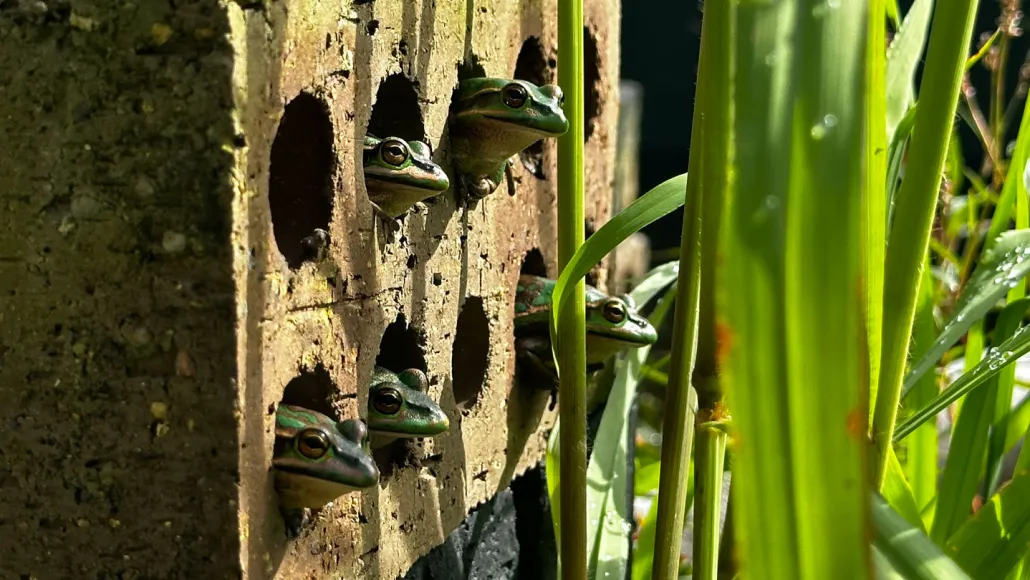Frogs battling a deadly fungal infection might find unexpected relief in tiny brick saunas.
Researchers discovered that green and golden bell frogs, afflicted by chytrid fungus (Batrachochytrium dendrobatidis), could improve their chances of overcoming the infection by spending time in sun-warmed shelters. This finding, reported on June 26 in Nature, suggests that these makeshift saunas help the frogs combat the pathogen more effectively.
Chytrid fungus has significantly contributed to declines in at least 500 amphibian species, including the green and golden bell frog (Litoria aurea), which has vanished from 90% of its original Australian habitat. The fungus invades the frogs’ skin, disrupting electrolyte and fluid absorption and leading to potential heart failure. Chytrid thrives in cooler temperatures and is less viable above 30°C (86°F). Since bell frogs prefer temperatures around 29°C (84°F), which is less favorable for chytrid, winter’s drop in temperature leads to increased infection rates.
To investigate whether warmer hideouts could assist frogs in battling the fungus, conservation biologist Anthony Waddle from Macquarie University, Australia, and his team created 12 outdoor habitats. Each habitat included water, artificial plants, and shelters made of black masonry bricks inside small greenhouses. Four habitats housed only healthy frogs, while the remaining eight contained a mix of healthy frogs and those infected with chytrid. Half of the shelters were shaded, and the other half were exposed to test a range of temperatures.
The frogs readily took to the saunas. In cooler outside temperatures of 20° to 25°C (68° to 77°F), the unshaded bricks warmed up the shelters by an additional 15 to 20 degrees. Shaded shelters, on the other hand, were 4.5 degrees cooler on average.
Frogs in the warmer, unshaded shelters maintained higher body temperatures and exhibited milder infections over the 15-week study period. However, even access to any type of sauna, whether warm or not, helped infected frogs combat the disease, boosting their survival rates to match those of healthy frogs.
Once infected frogs cleared the fungus, they showed increased resistance to future infections. Frogs that had previously overcome chytrid were 23 times more likely to survive reinfection compared to those never exposed to the pathogen.
Bell frogs, which have adapted to urban environments, might benefit significantly from such shelters. Waddle notes, “Bell frogs used to live in people’s toilets and letterboxes before chytrid.” He suggests that creating these habitats could provide a crucial boost for populations still struggling.
The saunas are relatively inexpensive and easy to build, making them a feasible option for frog enthusiasts to install in their gardens, according to disease ecologist Erin Sauer from the University of Arkansas.
However, not all species may benefit from these warm shelters. Amphibian biologist Cori Richards-Zawacki from the University of Pittsburgh warns that species preferring cooler environments, like the Panamanian golden frog (Atelopus zeteki), might not find such shelters helpful. In fact, they could become more susceptible to chytrid at higher temperatures.
“Chytrid is a huge, massive problem,” Waddle acknowledges. While the study offers a glimmer of hope, he cautions that it is not a universal solution.
